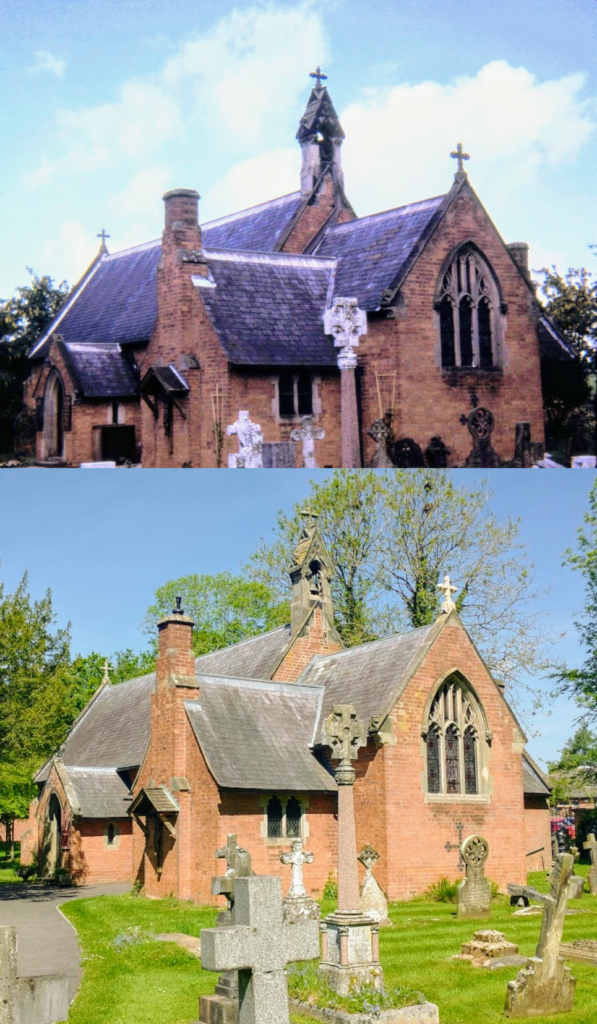This ‘then’ image of St Augustine’s RC Church (also known as St Austin’s) on Beehive Hill was taken by Rob Steward sometime in the 1960s. The ‘now’ image was taken in June 2021.
From the time of the Dissolution of the Abbeys, by order of Henry VIII in 1538, until the 18th and 19th century Catholic Emancipation measures, there had been a legal framework “to abjure (renounce) the temporal and spiritual authority of the pope and transubstantiation placed major burdens on Roman Catholics”. The saying of Catholic Mass by priests had been banned and driven underground, and hence, Kenilworth, like towns all over the country, had no formal Catholic place of worship.
The Parish History section on the Catholic Parish of Kenilworth website lists a brief history of this period: “At the beginning of the 19th century the Catholic community of Kenilworth had no church and had to travel to Wappenbury for Mass. At that time the Amherst family moved to Fieldgate House and set aside a room within their home for worship, and invited local Catholics to join them. In 1841 the family commissioned the famous architect Augustus Welby Pugin to construct St Augustine’s church close to their home. It was opened for worship in 1842, extended in 1852 and consecrated in 1904. Thereafter the Catholics of Kenilworth had the benefit of this compact and beautiful church”. The Amherst family name is commemorated locally in the name of nearby Amherst Road.
The church’s Grade II listing in 1949 describes it as “Circa 1840 by Augustus Welby Northmore Pugin. Red brick, stone dressings, decorated style. Nave, chancel, south porch and vestry, north aisle”. The colourful, detailed ceramic tiles around the altar are reminiscent of the designs Pugin used in the Commons and the Lords.
A convert to Roman Catholicism since 1834, Pugin was a prestigious figure to create the new St Augustine’s church. When the Palace of Westminster burned down in 1834, Prime Minister Sir Robert Peel resolved that its replacement should be in the English Gothic style. Pugin was the foremost expert on the Gothic style, but he had to submit each of his Westminster designs in the name of other architects because, at the time, his designs would have been rejected out of hand, by virtue of his Catholicism. No such draconian stipulations were in force for the designs for our St Augustine’s church, of course, so Pugin was commissioned to produce the design, as he had done for many such Anglican and Catholic church refurbishments, throughout England.
St Augustine’s became the town’s principal place of Catholic worship, but as the Parish history section of the website continues “By the late 1950s the growth of the Catholic community was such that all Masses at St Augustine’s were very crowded. Arrangements were made for Mass to be said, originally in the lounge of the Green Man public house in Warwick Road, and then later in the bar. A number of town centre locations were considered in the hope that a new church could be built. As a result of further growth of the community, Father Archie Snell was appointed in 1964 as parish priest of the new parish of St Francis of Assisi. The present site, then known as Hotel Australia, was acquired in 1966 as a result of the generosity of parishioners and with funds previously raised.” That Hotel Australia building was itself demolished and replaced by the current structure in 1992 – 1993.
